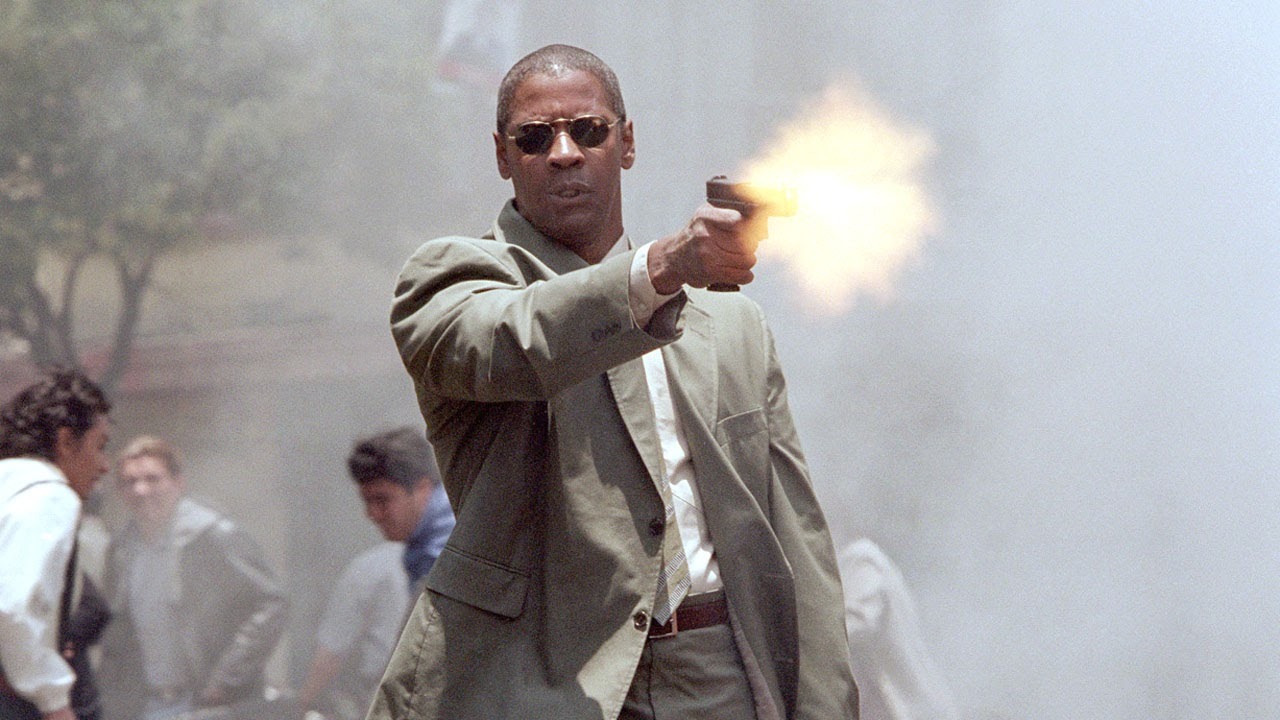“Man on Fire”

Released in 2004, Man on Fire is a gripping thriller that combines intense action with profound emotional depth. Directed by Tony Scott and starring Denzel Washington in a powerhouse performance, the film is a riveting exploration of vengeance, redemption, and the personal cost of violence. Based on the novel by A.J. Quinnell, Man on Fire stands out as a compelling narrative that balances brutal action with a poignant character study.
The film is set in a gritty and dangerous Mexico City, where the story unfolds against a backdrop of pervasive corruption and crime. The narrative follows John Creasy (Denzel Washington), a former CIA operative who is struggling with his past traumas and a sense of purposelessness. Creasy is hired as a bodyguard for a wealthy family’s young daughter, Pita Ramos, played with charm and emotional depth by Dakota Fanning. The initial dynamic between Creasy and Pita is marked by mutual distrust and guardedness, but as the story progresses, a deep bond forms between them.
The film’s plot is set in motion when Pita is kidnapped, and Creasy is left devastated. The abduction sets off a chain of events that thrusts Creasy back into the violent world he had hoped to leave behind. Fueled by rage and a sense of personal failure, Creasy embarks on a relentless quest for revenge against those responsible. The journey is not just physical but emotional, as Creasy battles both external enemies and his own inner demons.

Denzel Washington’s portrayal of Creasy is one of the film’s greatest strengths. Washington brings a raw intensity and depth to the character, capturing Creasy’s transformation from a disillusioned, weary man into a relentless avenger. His performance conveys a palpable sense of grief and determination, adding layers of complexity to the character. The film’s exploration of Creasy’s internal struggle is portrayed with a blend of vulnerability and ferocity, making his quest for redemption deeply compelling.
The film’s direction by Tony Scott is characterized by its dynamic and sometimes frenetic visual style. Scott employs a range of cinematic techniques, including rapid editing, striking color palettes, and intense camera angles, to create a sense of urgency and chaos. The use of these techniques immerses the audience in Creasy’s world, making the action sequences feel immediate and visceral. The film’s visual style, while sometimes overwhelming, effectively complements the story’s high stakes and emotional intensity.
The supporting cast adds significant depth to the film. Radha Mitchell plays Lisa Ramos, Pita’s mother, who is both distraught and determined in her quest to find her daughter. Her performance adds emotional weight to the film and highlights the impact of Pita’s kidnapping on the entire family. Additionally, the film features notable performances from actors such as Christopher Walken and Mickey Rourke, who bring additional layers of complexity to the story’s secondary characters.

The action sequences in Man on Fire are intense and unrelenting. The film’s portrayal of violence is both graphic and stylized, reflecting Creasy’s internal turmoil and the high stakes of his mission. The action scenes are meticulously choreographed and edited, creating a sense of kinetic energy that propels the narrative forward. However, the film also balances its action with moments of introspection, allowing the audience to connect with Creasy’s emotional journey amidst the chaos.
The film’s score, composed by Harry Gregson-Williams, adds a powerful emotional resonance to the narrative. The music complements the film’s tone, enhancing both the tension of the action sequences and the poignancy of the quieter moments. The score’s blend of orchestral and electronic elements creates a soundscape that is both evocative and immersive.
Man on Fire also explores themes of redemption, justice, and the moral complexities of revenge. The film delves into the cost of violence and the impact it has on both the perpetrator and the victims. Creasy’s journey is not just a quest for retribution but a search for personal redemption and a way to reconcile his past actions with his present desires. The film’s exploration of these themes adds depth to its narrative and elevates it beyond a typical action thriller.
In conclusion, Man on Fire (2004) is a powerful and emotionally charged film that combines intense action with a profound character study. Denzel Washington’s commanding performance, Tony Scott’s dynamic direction, and the film’s exploration of complex themes make it a standout entry in the thriller genre. The film’s portrayal of vengeance, redemption, and personal sacrifice creates a compelling and thought-provoking experience. For audiences seeking a gripping thriller that balances high-octane action with emotional depth, Man on Fire offers a memorable and impactful cinematic journey.









